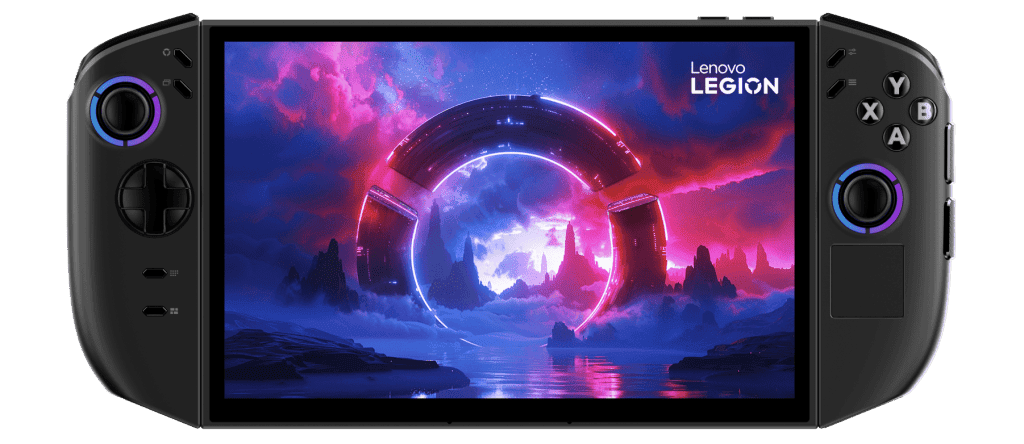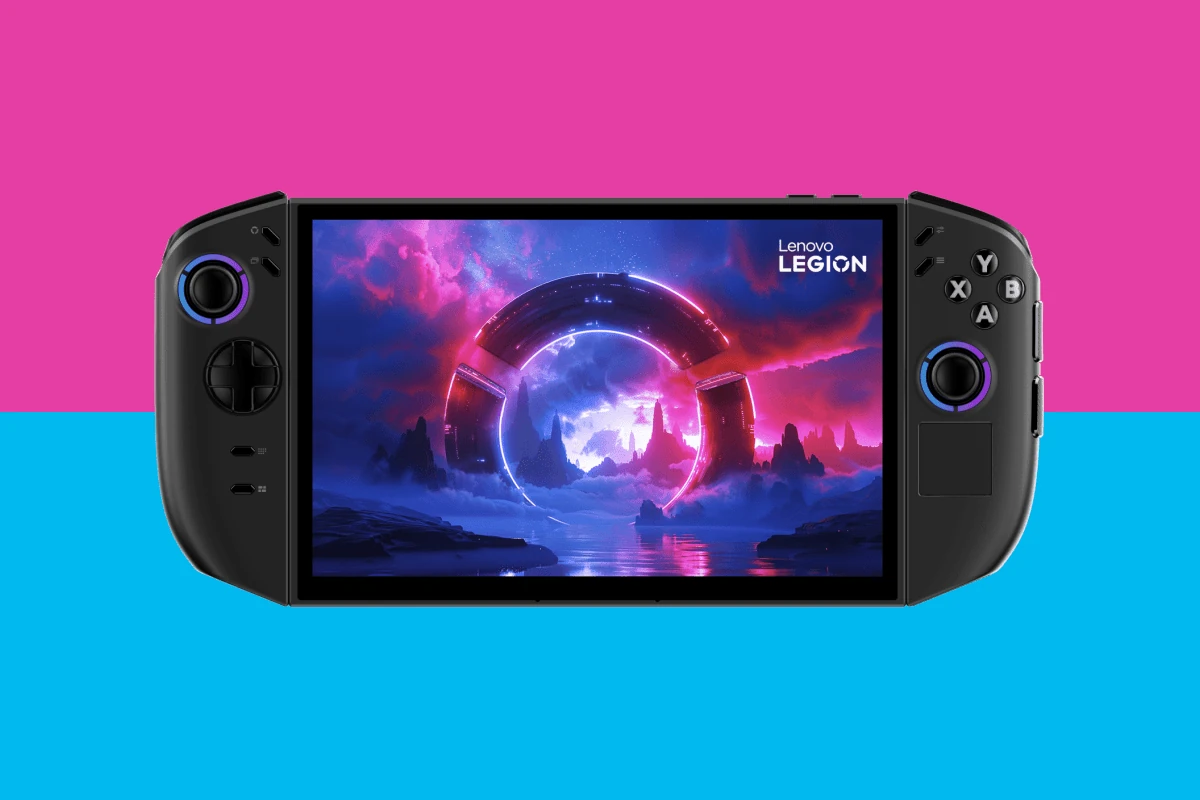The Lenovo Legion Go 2 is an upcoming handheld PC featuring detachable controllers, similar to the Nintendo Switch, allowing for flexible gameplay in handheld and tabletop modes. It boasts a high refresh rate screen and VRR for smooth gaming, although its resolution is slightly lower than its predecessor, potentially enhancing battery life and performance.
Competing in a market with the Steam Deck, Nintendo Switch, and ROG Ally, the Legion Go 2 emphasizes versatility and ergonomics. Set to launch in the coming year, it aims to challenge major competitors, including the anticipated Nintendo Switch 2, positioning Lenovo as a noteworthy player in the handheld gaming sector.
Exploring the Lenovo Legion Go 2’s Detachable Design
The Switch Influence
The Lenovo Legion Go 2, teased at CES 2025, is generating buzz, especially regarding its controllers. Like the Nintendo Switch, the Legion Go 2 has detachable controllers. This design choice offers users multiple ways to play. You can attach the controllers for a traditional handheld experience. Or, you can detach them and use the built-in kickstand for tabletop mode, great for multiplayer games. This feature gives the Legion Go 2 a distinct “Switch 2 vibe,” as many observers have noted.

Design and Display Changes
Beyond the controllers, the Legion Go 2 has some other interesting changes. It has a slightly different look with rounded corners. The display resolution is reported to be 1,920 x 1,200, a step down from the original Legion Go’s 2,560 x 1,600. However, on an 8.8-inch screen, this difference may not be very noticeable. The lower resolution could even improve battery life and gaming performance. The refresh rate remains at a smooth 144Hz. Another important addition is Variable Refresh Rate (VRR). VRR helps to smooth out gameplay by syncing the display’s refresh rate with the game’s frame rate.
Comparing Handheld Gaming Options
The handheld gaming market is becoming more competitive. Here’s a quick comparison of some options:
| Device | Key Feature | Potential Benefit |
|---|---|---|
| Lenovo Legion Go 2 | Detachable Controllers, VRR | Versatile play, smoother gameplay |
| Steam Deck | Large game library | Access to Steam games |
| Nintendo Switch OLED | Portable console hybrid | Unique game titles, family-friendly |
| ROG Ally | Powerful hardware | Smooth performance for demanding games |
Each device has its strengths. The Legion Go 2’s detachable controllers and VRR offer versatility and smooth gameplay. The Steam Deck provides access to a large library of PC games. The Nintendo Switch offers unique, family-friendly titles and its hybrid nature. The ROG Ally offers powerful hardware for demanding games.
Addressing Potential Concerns
Some people might be concerned about the lower resolution display on the Legion Go 2. While it is a reduction in pixel count, the actual visual difference on the relatively small screen might not be significant. The potential benefits in battery life and performance could make it a worthwhile trade-off. It’s also important to remember that the device shown at CES 2025 was a prototype. Final specifications could change before release.
The Importance of Ergonomics
With any handheld device, how it feels in your hands is important. The detachable controllers on the Legion Go 2 could improve ergonomics. You can adjust the controllers to fit your hands better, which could lead to more comfortable gaming sessions. This is especially important for long play times.
Considering Other Handheld PCs
The handheld PC market is expanding rapidly. Devices like the Ayaneo series and the GPD Win series offer other options for portable PC gaming. These devices often have unique features and designs. For example, some offer built-in keyboards or smaller form factors. Exploring these alternatives can help you find the best handheld PC for your needs. These other handheld PCs also offer a good comparison point for the Legion Go 2. They show the range of design choices and features available in this growing market.
Short Summary:
- The Legion Go 2 features a unique design similar to Nintendo’s Switch, with detachable controllers.
- Technical specifications reveal powerful hardware, including an upgraded AMD Z2 Extreme chipset and a vibrant OLED display.
- Anticipation grows as this device could revolutionize portable gaming, especially with features mirroring those of the upcoming Switch 2.
With the gaming world always on the lookout for the next compelling handheld device, Lenovo appears poised to capture attention with its upcoming Legion Go 2. Following the success of its original Legion Go release in September 2023, Lenovo is ramping up efforts to position its new model as a formidable competitor to Nintendo’s forthcoming Switch 2. This time, Lenovo aims to enhance user experience with innovative detachable controllers and advanced gaming components.
The Legion Go 2’s design is reminiscent of the Nintendo Switch, which broke barriers in portable gaming with its unique form factor. However, Lenovo seems determined to push the envelope even further. The new device is rumored to feature an elaborate and responsive OLED display, together with high-performance internals that are said to outperform many existing handhelds on the market today.
“With AMD gearing up to announce its Z2 Extreme chipset, Lenovo’s Legion Go 2 could turn into a powerhouse,” noted industry expert Mark Robinson. “The potential this device holds for gamers is immense.”
Regarding the hardware specifications, leaks suggest that the Legion Go 2 will be equipped with the aforementioned AMD Z2 Extreme chipset. This powerhouse will facilitate enhanced graphics and processing capabilities, making it an attractive option for gamers seeking performance. The original Legion Go featured the Z1 Extreme chipset; thus, the Z2 upgrade promises significant advancements in the gaming experience.
Noteworthy Specifications of Legion Go 2:
- Chipset: AMD Z2 Extreme
- Display: 8.8-inch 2560×1600 OLED, providing stunning visuals
- RAM: Options likely to include up to 32GB, enhancing multitasking
- Storage: Support for dual SSDs for ample space (both 2280 and 2230/2242 formats)
- Battery: Larger capacity than the original, promising longer gaming sessions
Moreover, the intermittent talks about a “Legion GO S Steam Edition” have sparked interest, especially since it may become the first handheld to ship with Valve’s SteamOS instead of the more traditional Windows operating system. This could provide users with an equally optimized gaming ecosystem tailored for portable play. Knowing how popular the Steam platform has become with gamers, this addition could position Lenovo favorably in a competitive marketplace.
As gamers look forward to the Switch 2 unveiling, various leaks suggest intriguing capabilities from Nintendo’s new offering. The potential dual functionality of Joy-Con controllers as PC-style mice is a particularly compelling aspect. The thoughtful design could enhance precision in gaming, and it might even offer users additional versatility in how they engage with gameplay across multiple devices.
“The integration of mouse-like capabilities in Joy-Con controllers could revolutionize how users interact with the Switch 2 and set a new standard in console controller versatility,” mentioned Jane Smith, tech analyst.
This brings us back to Lenovo’s design decision, as the current reviews of the original Legion Go indicate mixed feelings about its detachable controller feature. Many users expressed concerns about the structural integrity of the device, particularly related to how the gamepads attach and detach. Despite some praising the innovative aspect of the detachable gamepads, the feedback from the community points to a need for improving durability.
Community Feedback on Detachable Gamepads:
“The detachable controllers are a fun concept, but popular complaints point towards them being flimsy and wobbling from day one,” shared an early Legion Go user. “It’s a cool idea, but the execution could use refinement.”
Comparisons to competing products, such as the ASUS ROG Ally and the anticipated handheld devices featuring Intel’s Core Ultra 285V processor, have already begun. Lenovo’s commitment to enhancing the Legion Go’s structure and ensuring robust build quality will undoubtedly play a pivotal role in how the Legion Go 2 fares against its competition. Users prioritize performance, battery life, and overall usability—and having ample internal space and structural integrity significantly contributes to a device’s appeal.
Moreover, community voices on the necessary features highlight numerous requirements for any handheld device, including the need for:
- At least 24-32GB of RAM, as minimal RAM appears unsatisfactory for a premium handheld experience.
- Long-lasting battery life that exceeds 55WHr to accommodate extended gaming sessions.
- Support for WiFi 7, allowing for superior online capabilities that modern gamers deserve.
The upcoming CES 2025 event is expected to unveil further specifications and designs as Lenovo showcases its next generation of devices. The competitive landscape of gaming handhelds is evolving, characterized by more significant advancements in hardware and design—a trend Lenovo appears eager to embrace. With the anticipation surrounding the Legion Go 2, many are curious if it is just an evolutionary upgrade or a groundbreaking innovation in mobile gaming.
The value of the Legion Go 2 will hinge on several factors, including pricing and retail availability, especially as Lenovo positions its products against titans like Nintendo. Maintaining competitive pricing against the potentially lower cost of the Switch 2 could mean the difference between a successful launch and one that falls flat.
“If Lenovo plays its cards right with the Legion Go 2, it stands a strong chance of not just competing but truly thriving in the handheld market,” speculated Rebecca Turnbull, a gaming industry analyst.
Lenovo’s strategy to focus on improving both the hardware and the user experience could mark a significant turning point for the company. The intention to rid the devices of structural weak points and enhance user satisfaction will undoubtedly draw the attention of gamers who seek reliability and performance.
As excitement builds, many players will be closely following announcements related to all upcoming handhelds, particularly with the dual offerings of ordinary and Steam editions. The clear emphasis on gaming experience and the prospective functionalities could make Lenovo’s devices a compelling choice for consumers in a rapidly evolving marketplace.







